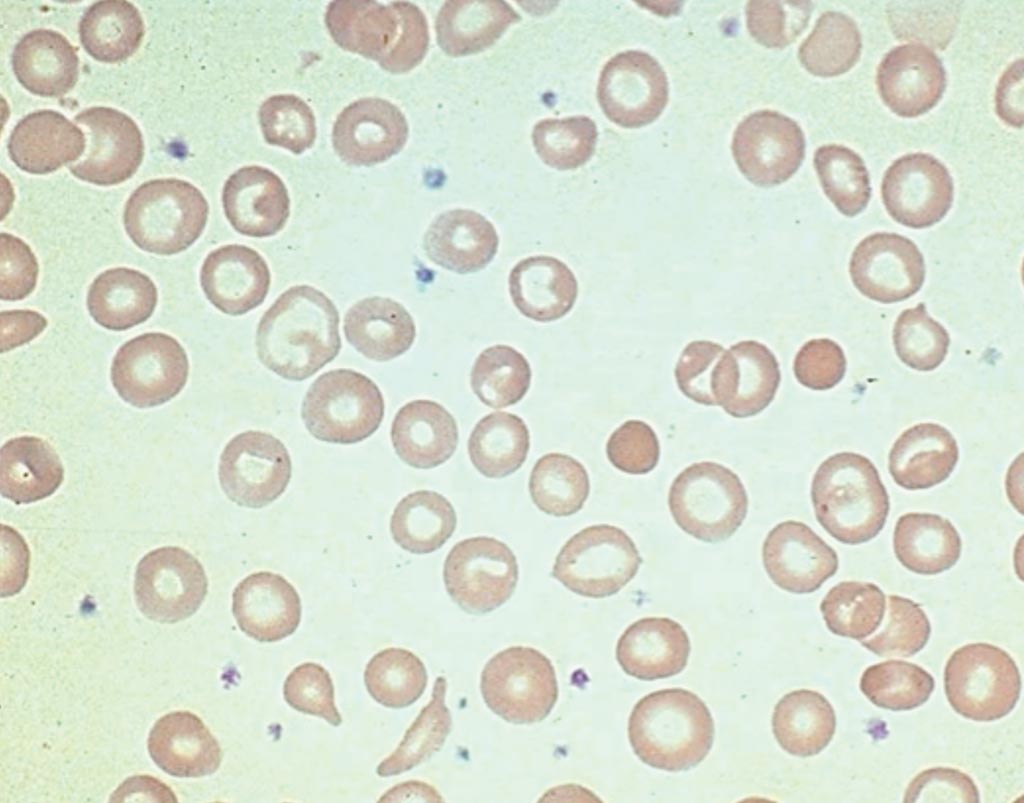Toolkit Developed for Iron Deficiency in Pregnancy
By LabMedica International staff writers
Posted on 04 Sep 2019
The risk of iron deficiency (ID) increases during pregnancy due to an increase in maternal iron requirements to accommodate the expansion of maternal red blood cell (RBC) mass, development of the placenta and fetus, and the loss of blood associated with labor and delivery.Posted on 04 Sep 2019
Fortunately, early detection of ID and treatment with daily iron supplementation is a straightforward and effective method of addressing ID. Iron deficiency and ID anemia (IDA) can be detected using simple blood tests of hemoglobin and ferritin, but often go unrecognized and untreated due to lack of knowledge of their implications and competing clinical priorities.

Image: A peripheral blood smear from a patient with iron deficiency anemia: significant hypochromia and microcytosis is seen, as well as moderate variation in size and shape of the red cells (Photo courtesy of American Society of Hematology).
A team of scientists working with St. Michael’s Hospital (Toronto, ON, Canada) developed and implemented a novel quality-improvement toolkit: ID in pregnancy with maternal iron optimization (IRON MOM) at the hospital. The toolkit included clinical pathways for diagnosis and management, educational resources for clinicians and patients, templated laboratory requisitions, and standardized oral iron prescriptions.
To measure the effectiveness of the toolkit, the team included the rates of ferritin testing, and outcome measures of the proportion of women with an antenatal hemoglobin value below 100 g/L (anemia), the proportion of women who received a red blood cell (RBC) transfusion during pregnancy, and the proportion of women who received an RBC transfusion immediately following delivery or in the 8-week postpartum period.
The pre-intervention period was from January 2012 to December 2016, and the post-intervention period was from January 2017 to December 2017. From the electronic patient records (EPR), 1,292 and 2,400 ferritin tests and 16,603 and 3,282 antenatal hemoglobin results were extracted pre- and post-intervention, respectively. One year after implementation of IRON MOM, they found a 10-fold increase in the rate of ferritin testing in the obstetric clinics at the hospital and a lower risk of antenatal hemoglobin values below 100 g/L (pre-intervention 13.5%; post-intervention 10.6%). In addition, a significantly lower proportion of women received an RBC transfusion during their pregnancy (1.2% pre-intervention versus 0.8% post-intervention) or immediately following delivery and in the eight weeks following (2.3% pre-intervention versus 1.6% post-intervention).
The authors concluded that the introduction of a standardized toolkit including diagnostic and management pathways as well as other aids increased ferritin testing and decreased the incidence of anemia among women presenting for delivery at their site. This strategy also resulted in reduced proportions of women receiving RBC transfusion during pregnancy and in the first eight weeks postpartum. The IRON MOM toolkit is a low-tech strategy that could be easily scaled to other settings.
Related Links:
St. Michael’s Hospital














